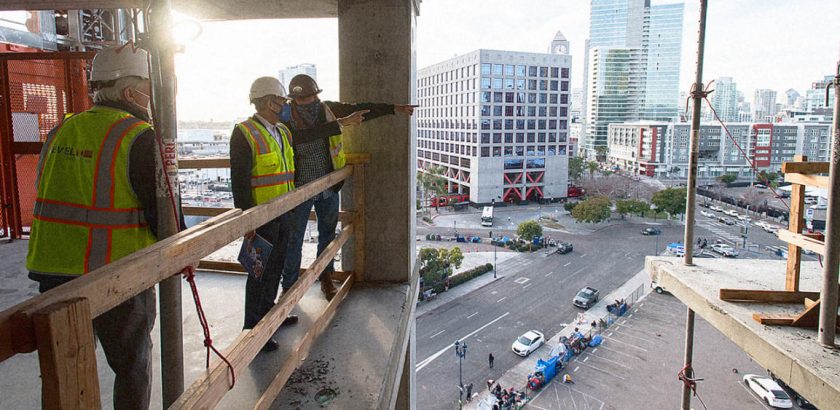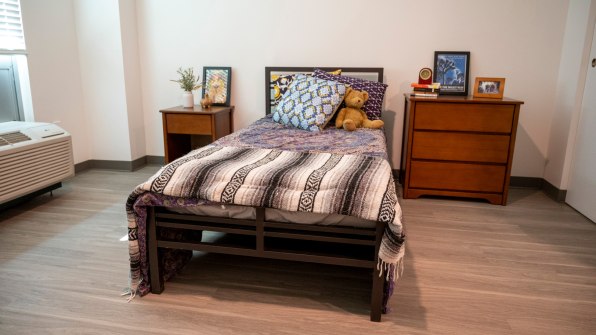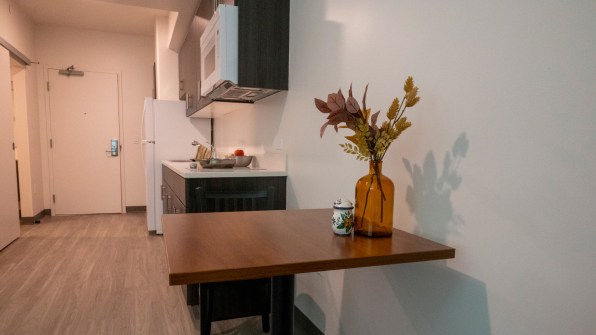Why San Diego is building affordable housing in the last place you’d expect: A downtown high-rise
Source: Fast Company

Why San Diego is building affordable housing in the last place you’d expect: A downtown high-rise
Most affordable housing is a low-slung, piecemeal affair. This high-density development is exactly the opposite.
By Nate Berg
- 02-09-22
- 8:00 AM
A new high density model for affordable housing is emerging in the pricy housing market of downtown San Diego.
The sunny border city has the fifth highest homeless population in the U.S., and the second highest population of homeless veterans. It’s also one of the most expensive housing markets in California and the country as a whole. For those who are unhoused or on the verge of homelessness, it’s a nearly impossible place to find a home. That’s put a lot of pressure on groups like Father Joe’s Villages, a provider of homeless shelters and supportive services in the San Diego region, which serves around 3,000 people a night.
“The average one-bedroom apartment is about $2,500 [a month]. It’s incredible. And the vacancy rate is very low,” says Deacon Jim Vargas, the group’s president and CEO. “The combination of the two is very challenging to the population we serve. It’s just out of their reach.”

The $145 million project is the first big chunk of a streak for Father Joe’s Villages, which has pledged to develop 2,000 units of permanently affordable housing for those experiencing homelessness.Father Joe’s set its 2,000-home goal back in 2018 and has also started to convert underused motels into supportive housing. So far, the group has about 500 housing units completed, including the Saint Teresa project, and another few hundred in the development pipeline. Many are located in the downtown area–a rarity for this scale of development.

“In the last five to six years, we came to the conclusion that, while it’s important to help people get off the streets and into shelters and start working with them, and absolutely we do that day in and day out, we know that at the end of the day a shelter is not a home,” says Vargas.Saint Teresa of Calcutta Villa is a dense, two-tower project on a busy corner in downtown San Diego, with a large inner courtyard, four other outdoor areas, a fitness room, and space for a community garden. Each floor has a shared community space, which Vargas says is critical in designing for people coming off years living in public, on the street. “A lot of people who’ve been on the streets [chronically] have a sense of community on the streets. So when you take them from that and put them in four walls, a lot of them can go stir crazy,” Vargas says.

“All in all, from inception to cutting that ribbon, it’s been five years. That’s far too long,” says Vargas.The next projects in the group’s pipeline are smaller in scale, with three different projects at about 100 units each. That will chip away at their 2,000 home goal, according to Father Joe’s Village chief strategy officer Bill Bolstad, but it also highlights the importance of developing higher density projects like the Saint Teresa of Calcutta Villa buildings. “Three projects means three separate sets of financing. It’s not quite triple the work, but it’s darn close,” says Bolstad. “That’s why it makes sense to bring these things to scale when you have the opportunity to go big.”
Father Joe’s Villages is hoping to shift toward other higher density projects like Saint Teresa of Calcutta Villa. Vargas says that with more flexible financing, well-designed projects can make a big impact on the housing challenges facing cities like San Diego.
“Part of what we’ve learned and what we’ve been advocating at different levels is we need to streamline this,” says Vargas. “Not just us as an organization. We can’t do it ourselves. We as an ecosystem, as a community need to really look at what it takes to speed up this process.”
Link to Original Article (may require registration)
https://www.fastcompany.com/90719807/why-san-diego-is-building-affordable-housing-in-the-last-place-youd-expect-a-high-rise-downtown 
